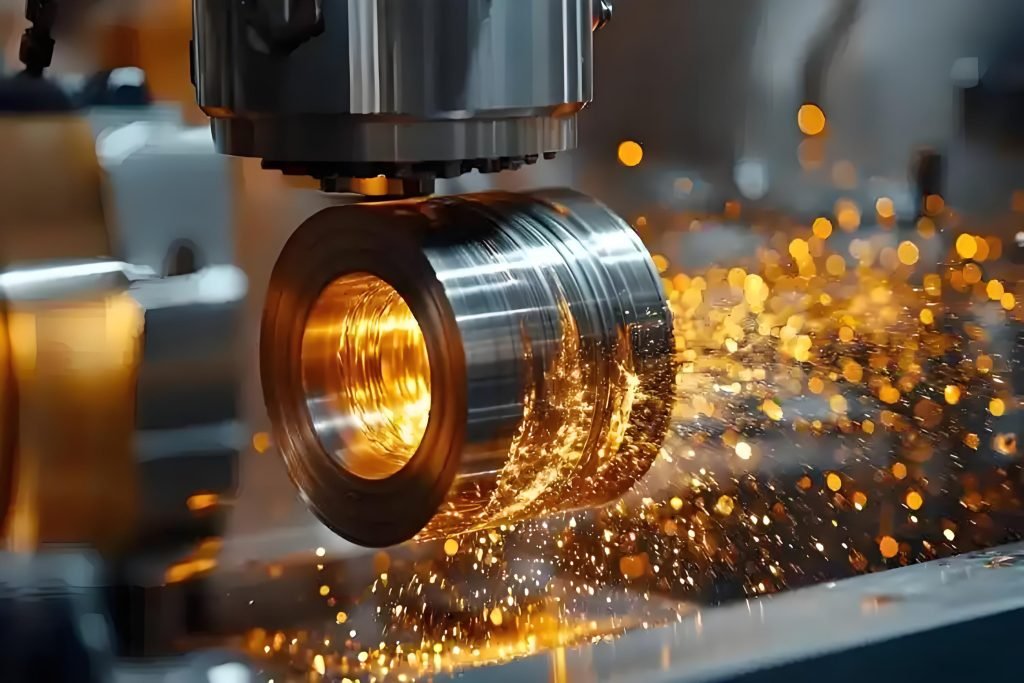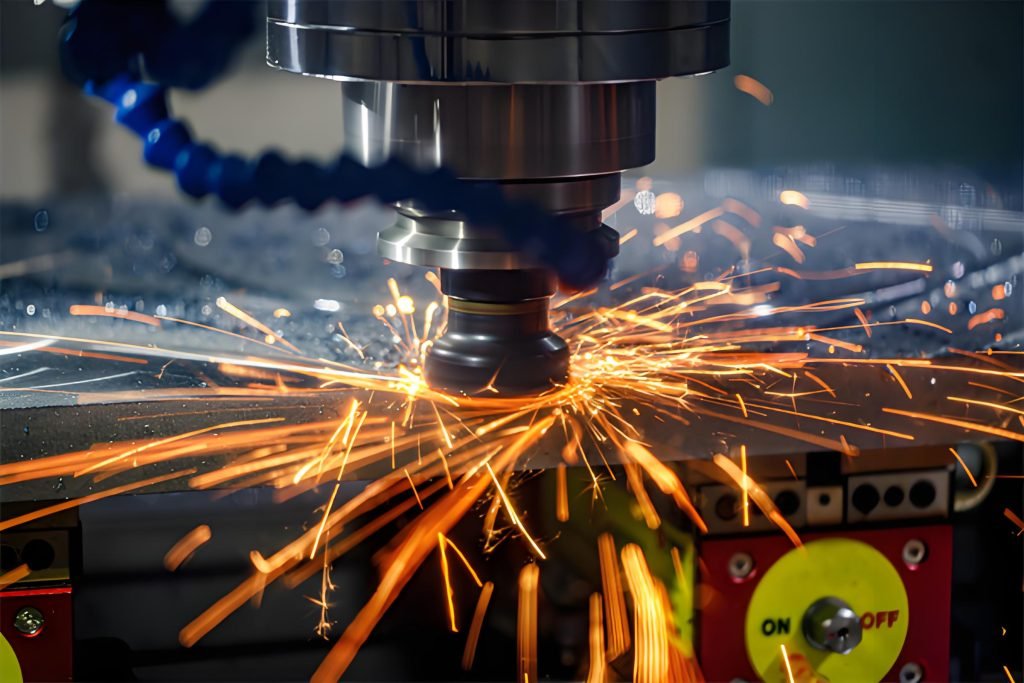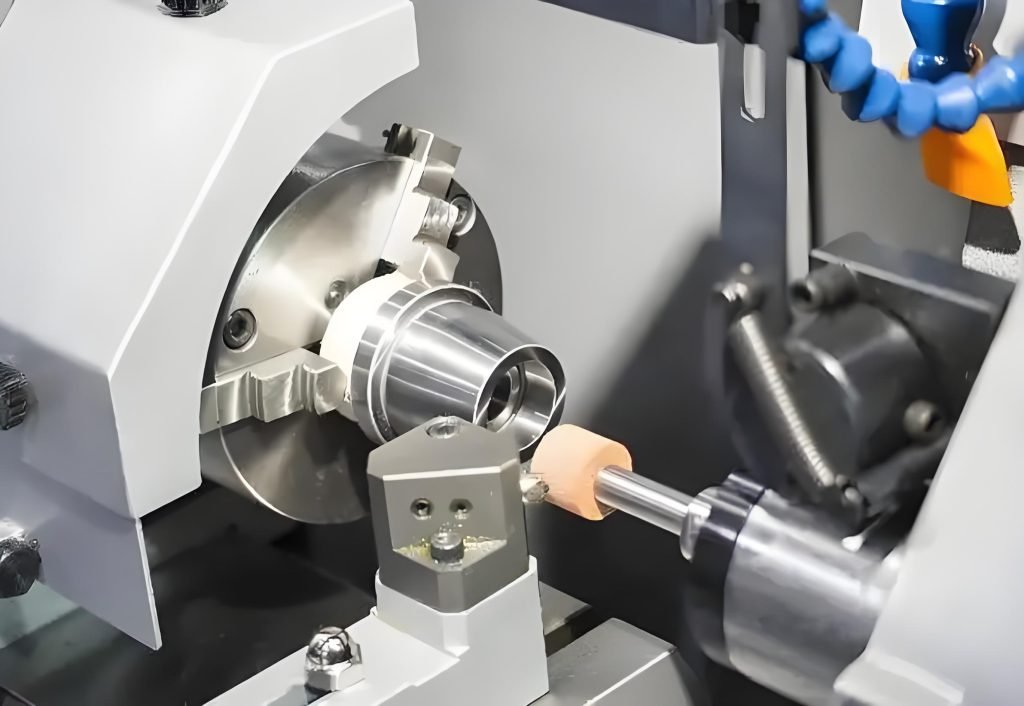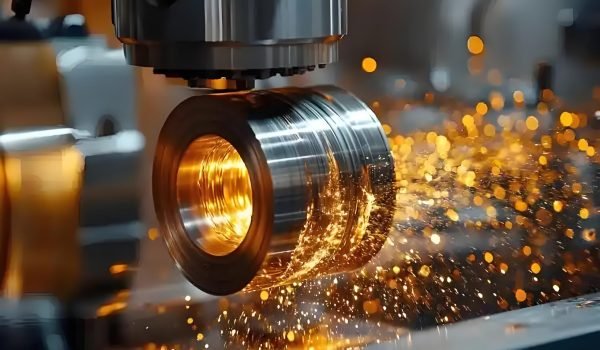One of the most significant methods in contemporary manufacturing is grinding. It is employed in the production, completion, and refinement of metal component. You will have an edge whether you operate a small workshop or work in a factory if you know how to grind.

You can learn about grinding, how it’s done, and why it’s crucial from this guide. You will learn everything step by step, in a simple manner. Just keep reading to get the most from this post!
What Is Grinding: Why It Matters Today
A machining process is grinding. You employ it to cut material off a workpiece with an abrasive wheel. The wheel rotates at a high speed. The wheel has tiny abrasive grains that work as cutting tools. They remove unwanted material on the surface.
You are grinding to achieve high precision. It fits very well in tight tolerances and smooth finishes. Grinding is a highly controlled process, unlike other cutting methods. You can refine shapes, sizes, and even textures.
This process applies to hard materials. It is mainly used on hardened alloys, steel, and ceramics. It is therefore commonly utilized in the tool-making, automotive, and aerospace sectors.
Grinding is also observed in the everyday repair shops. It assists in smoothing the welds, sharpening and shaping the edges of blades, or refining edges. It is consistent, reproducible, and suited to both rough cutting and fine finishing.
How Grinding Works: Key Process Steps
You can select the best tools and achieve better results if you understand the grinding process. Here’s a detailed explanation of how it operates.
1. Select the Right Grinding Wheel
The right wheel must be used first. The abrasive grains on each wheel are appropriate for a variety of materials. For hard metals, use soft wheels. Or soft metals, use rugged wheels. The wheel’s form is also essential. Select flat wheels for grinding surfaces. Or spherical components, use cylindrical wheels.
2. Firmly Mount the Workpiece
The workpiece must be fixed in position before grinding can begin. Utilize specialized fixtures, vises, or magnetic chucks. The configuration needs to be stable. The outcome will be subpar if your portion moves while being ground. Verify the alignment twice at all times.
3. Configure the Machine’s Settings
Adapt the machine’s settings to the task at hand. Regulate the depth of cut, feed rate, and spindle speed to achieve optimal cutting conditions. If you go too quickly, the component can overheat. If it’s too sluggish, productivity will suffer. Be sure to adhere to the instructions unique to the material.
4. Apply Coolant Properly
Heat is produced during grinding. You risk damaging the wheel or the component if it doesn’t cool down. To maintain low temperatures, use a high-quality coolant. Additionally, it clears the cutting area of debris and helps to prevent dust. Put it straight onto the point of contact.
5. Execute The Grinding Passes
Start grinding as soon as everything is in place. Light passes can be used to eliminate material. Do not push the wheel. Let the abrasives do the work. Regularly inspect the component between passes. To get your desired proportions, make any necessary adjustments.
6. Examine the Final Phase
Examine the end product after grinding. Utilize ocular inspections, surface testers, or micrometers. Ascertain that the finish is precise, seamless, and within your tolerances.
Types of Grinding Processes

There are several grinding techniques, each intended for specific finishes and forms. Your material, part shape, and accuracy requirements will determine which one is best for you.
Surface Grinding – Flat Surfaces (Manual & CNC)
This is the most prevalent type. You make flat surfaces using it.
- A flat grinding wheel passes over the workpiece.
- It works perfectly with flat dies, metal sheets, and tool plates.
- The finish is uniform and smooth.
Surface grinding is the method of choice when a flat object requires great precision.
Cylindrical Grinding
When working with rounded or tube-shaped components, use this.
- The grinding wheel traverses the exterior of the revolving workpiece.
- Shafts, rods, and pins may all be ground to great perfection.
- Internal cylindrical grinding targets, such as tubes or bores, are used on surfaces.
Centerless Grinding
This is for manufacturing in large quantities.
- The portion between centers doesn’t need to be fixed.
- Between a regulating wheel and a grinding wheel, the workpiece is supported.
- It is quick, steady, and ideal for homogeneous parts, such as metal bars or bearing rollers.
This is what you’ll use when you require speed and reliability.
Internal Grinding
- This procedure is ideal for interior holes or bores.
- Within the workpiece, a smaller grinding wheel rotates.
- It will be utilized in precision parts such as cylinders or bushings.
Specialised Types
The following might be used, depending on the job:
- For deep cuts in a single pass, use creep-feed grinding.
- To sharpen cutting tools, use tool and cutter grinding.
- Used in bench grinding in workshops for rapid shaping and sharpening
Every technique has a role. The part form, surface requirements, and manufacturing scale must all be taken into consideration.
Grinding Applications Across Different Industries
Some of the industries are discussed below where grinding plays a vital role.
Automobile Sector
Grinding is used in the automobile industry to guarantee performance and safety.
- It is used to complete gears, shafts, and engine components.
- It reduces wear and friction by establishing tight tolerances.
- Additionally, grinding increases fuel economy and part lifespan.
Automobile gearboxes and engines wouldn’t function as smoothly without grinding.
Engineering in Aerospace
Here, accuracy is essential rather than optional.
- Aircraft components are subjected to extreme heat and stress.
- For dimensional control and flawless surfaces, you depend on grinding.
- Grinding guarantees that all of your parts, from landing gear to turbine blades, pass stringent examinations.
Failure can result from any error. Grinding is therefore necessary to satisfy aeronautical requirements.
Toolmaking and Moulds
Grinding is crucial for making injection molds or cutting tools.
- It creates intricate contours and sharp edges out of hardened steel.
- You may achieve superior finishes with less polishing time by grinding.
- It also makes the tool last longer.
You receive reduced wear rates, improved productivity, and cleaner cuts.
Medical & Electronics
Precision is also essential for small parts.
- Grinding can be found in smartphone housings, implants, and surgical equipment.
- It produces clean, smooth edges that guard against harm or damage.
- Grinding produces reliable parts for electronics that fit precisely and operate without issue.
Grinding is essential in situations where precision and surface quality are important. Its worth cannot be overlooked, regardless of the industry.
Advantages and Disadvantages of Grinding

Here are some pros and cons of grinding given below;
Pros
- You can achieve excellent tolerances with high precision grinding.
- For essential components, this is perfect.
- You obtain a clean, smooth surface that often doesn’t require further polishing.
- Ceramics, unusual alloys, and hardened steel can all be ground. This is where many other approaches fall short.
- You can grind intricate profiles, grooves, and forms with the correct wheels.
- With the right grinding processes, you cannot only repair cutting tools but also create new components.
Cons
- Heat is produced during grinding. You run the danger of your parts burning or warping without coolant.
- Grinding removes less material each pass than milling or turning.
- Grinding wheels deteriorate over time. They need to be changed and dressed regularly.
When accuracy is crucial, grinding is still the best option, despite a few disadvantages. With each pass, you obtain more dependable, tighter control, and cleaner results.
Grinding’s Best Practices & Optimization Tips
Utilizing optimal techniques in grinding increases tool life, reduces waste, and enhances quality. Here are some tips for making every struggle worthwhile.
Use Freshly Dressed Wheels
A dull wheel causes poor finishes and burning. To maintain precise form and sharp edges, dress the wheel regularly.
Monitor Vibration
Surface quality is destroyed by vibration. Keep mounts tight, balance your wheels, and secure your machine.
Control Heat Buildup
Heat can accumulate even with cooling. Avoid spending too much time in one place and make use of light passes.
Match Coolant To The Job
Different fluids are required for various materials. For your application, pick a coolant with the appropriate flow and filtration.
Stick To Maintenance Schedules
Grinding machines require maintenance. Regularly align parts, clean filters, and inspect spindles to ensure optimal performance.
Being proactive prolongs tool life, prevents expensive rework, and boosts overall productivity.
Grinding FAQs: Quick Answers to Common Questions
Q1. What Materials Can be Ground?
Metals, ceramics, hardened steels, and composites may all be ground. Particularly in high-precision sectors, grinding can handle difficult materials that other machining techniques struggle to process.
Q2. Is Grinding the Same as Sanding?
No. Sanding uses gentler abrasives to smooth surfaces. Grinding is a machining technique that uses precise and powerful abrasive wheels to remove material.
Q3. Can Grinding Machines be Dangerous?
Indeed. Grinding can result in heat burns, flying debris, and wheel fractures if the proper safety equipment and coolant are not used. Always use gloves and shields, and observe safety procedures.
Final Verdict
When material hardness, surface quality, and accuracy are your primary concerns, nothing provides the control you need like grinding. In the automotive, aerospace, or toolmaking industries, it enables you to satisfy the highest requirements.
When you select an appropriate approach and adhere to the best practices, you can enhance quality and efficiency. In the future, CNC grinding and intelligent monitoring systems will continue to have a significant influence. Fecision offers high-quality grinding solutions and professional services, providing stable solutions and expert assistance when needed.




